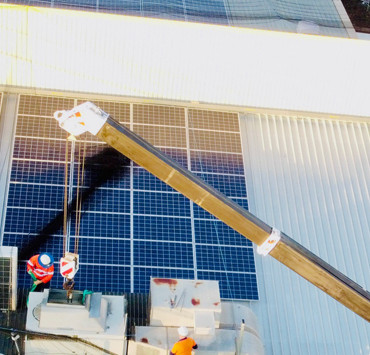Did you know that Air handling units in large buildings are most likely part of the fire safety installation for the building and therefore an Essential Safety Measure (ESM). Therefore it is essential that you maintain them in accordance with the law.
There are numerous laws, codes, regulations and Australian Standards that provide the governance regarding this maintenance that our staff are familiar with. It is part of being suitably qualified to undertake this type of maintenance and your current HVAC maintenance provider should be aware of all the requirements to keep your building safe.
The onus on maintenance may seem excessive as you may think that HVAC systems play little part in fire prevention and control in buildings. But it is the smoke that kills people and it is the spread of smoke that HVAC systems can help or hinder. Systems such as fire dampers, optical sensors and ionized smoke detectors may be present in the ductwork that are designed to monitor for any signs of smoke and quickly shift operations from normal to active smoke control or shutdown, depending on the system.
Active smoke control through HVAC systems is thought to have many advantages for buildings experiencing fire, including:
Smoke control can prevent smoke from entering other rooms through leaks or open doorways.
It can reduce the spread of fire as fire follows smoke paths.
Sprinkler systems may not activate until dangerous amounts of smoke have already begun to move throughout a building.
In Queensland, part MP6.1 of the Queensland Development Code sets out the performance standards for maintenance required to keep buildings safe and specifies the maintenance records required to be kept. You can download the relevant QDC here.
Important points for building owners and occupiers regarding the QDC:
The QDC requires maintenance of fire safety installations, which include Air Handling Units, to comply with AS1851:2012
Requires building occupiers to keep records of any said maintenance.
Requires the maintenance to be carried out by suitably qualified persons.
There are numerous other conditions that may apply to your specific building’s essential safety measures and building managers should check with their specialist existing contractor or building certifier for exact advice. If your current HVAC maintenance contractor can’t confidently explain whether your building is compliant or not, you should talk to us. The importance of using competent persons cannot be stressed enough, as ultimately building managers are required to act with a level of due diligence in conforming to the codes.
Our Advanced Asset Management system records all maintenance and communication regarding assets for our customers in an online cloud based portal that you can connect with 24-7. It is a great tool for keeping your records regarding HVAC in one place, not to mention a handy way to see your costs for the assets when its budget time.
Dont forget, specialised staff at Advanced Air are on hand to answer any questions you may have regarding your responsibilities with HVAC building compliance, and we are happy to help. Click here for our details
References
Bradshaw, V. (2006). The Building Environment. Hoboken: John Wiley & Sons.
Building Codes Queensland,. (2012). Guidelines for Inspection of Class 2 to 9 Buildings. Retrieved from http://www.hpw.qld.gov.au/SiteCollectionDocuments/guidelines-inspection-of-class-2-to-9-buildings.pdf
Current parts | Department of Housing and Public Works. (2016). Hpw.qld.gov.au. Retrieved 9 June 2016, from http://www.hpw.qld.gov.au/construction/BuildingPlumbing/Building/BuildingLawsCodes/QueenslandDevelopmentCode/Pages/QueenslandDevelopmentCodeCurrentParts.aspx





